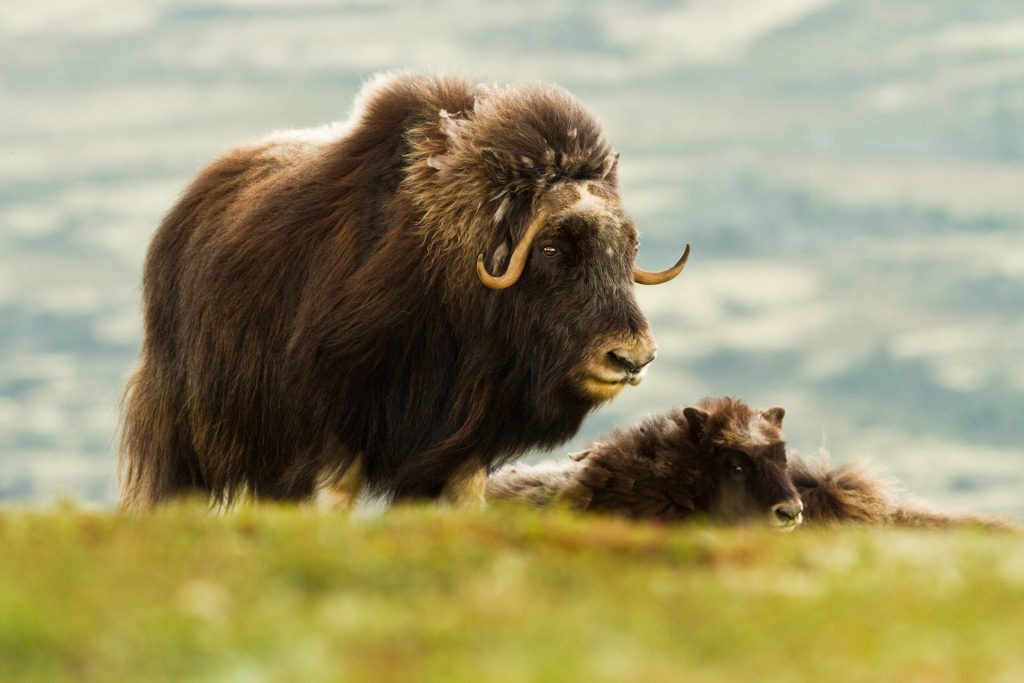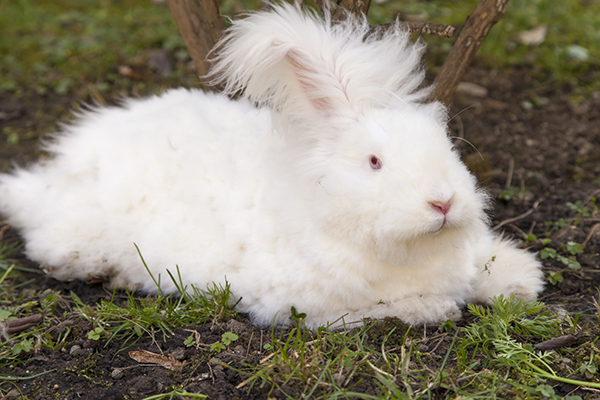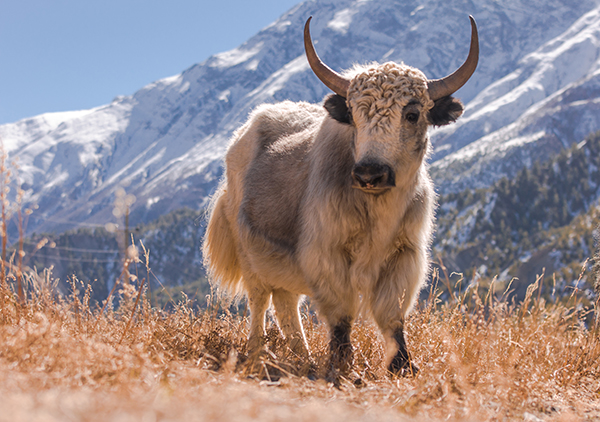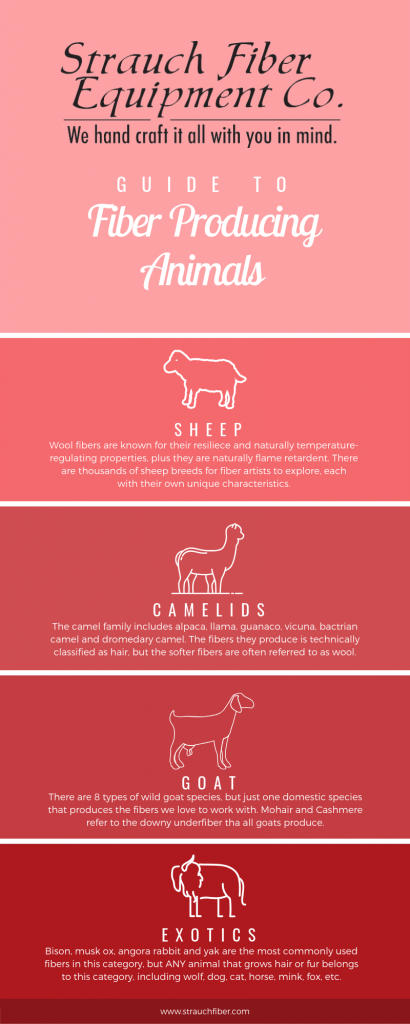As a fiber artist, there is no shortage of exciting fibers to explore! Especially if you are working with a raw fleece, these fibers benefit from proper preparation, and our drum carders can process virtually any fiber into beautiful batts. Even your most prized fibers can be processed without fear of damage: because the drums don’t touch, there is no risk of fibers getting stuck or jammed during the carding process.
We’ll be sharing more tips and resources covering all aspects of fleece and fiber on future blog posts; today, we kick things off with an exploration of the five broad categories of fiber-producing animals.

SHEEP
Wool fibers are known for their resilience and naturally temperature-regulating properties, plus they are naturally flame retardant. There are thousands of sheep breeds for fiber artists to explore, each with their own unique characteristics. When describing a particular breed of sheep or even a single fleece, there is a special vocabulary to describe every aspect, from fineness to luster to crimp….and beyond!
In a future blog post, we’ll delve deeper into this vocabulary and also talk about some of the many interesting breeds available to today’s fiber artists. In the meantime, there are plenty of great resources where you can learn more! We recommend Deb Robson’s Fleece & Fiber Sourcebook and The Spinner’s Book of Fleece by Beth Smith to start your breed-specific wool journey, visiting a nearby fiber festival to meet the farmers who raise fiber producing animals, or searching out breeders’ associations for more information on specific types of animals and fiber.

CAMELIDS
The camelid family includes alpaca, llama, guanaco, vicuna, Bactrian camel and dromedary camel. Guanaco, vicuna and Bactrian camels are found in the wild, where they live in groups. Alpacas and llamas have been domesticated and are perhaps the most well-known fiber-producing animals within this group.
The fibers these animals produce is technically classified as hair, but the softer fibers are often referred to as wool – and some of this fiber is quite fine! Some fleece have very coarse, stiff guard hairs that can be used to make rope or rugs, but need to be removed before making into yarn.

GOAT
There are 8 types of wild goat species, but just one domestic species that produces the fibers we love to work with. Mohair and Cashmere refer to the downy underfiber that all goats produce, rather than a specific breed of goat. These animals are dual coated, meaning that they produce two types of fibers: the long, coarse guard hairs that protect the downy undercoat that is prized for its softness and insulating qualities. New cross-breeds of goats such as cashgora and pygora have been created to produce cashmere-like fibers with longer, more lustrous fibers, but it should be noted that the quality can vary widely.
EXOTICS
Any animal that grows hair or fur can have these fibers harvested for use. Today, we’ll cover some of the most popular exotic fibers among fiber artists:

- Bison: Once on the brink of extinction, nearly all bison are raised on ranches, although you can’t exactly call them domesticated (read: they are not fans of being shorn). These animals grow at least five types of fiber which is shed every spring. The two outermost coats consist of coarse hair; the next two coats contain shorter guard hairs, and the final coat consists of a fine, soft down, which of course is of the most interest to fiber artists!

- Musk Ox: These animals grow several types of fiber, with the most prized being the soft downy undercoat referred to as qiviut. This fiber is rare (and usually costly), and it is extremely soft, fine, and lightweight, with incredible insulating qualities. On top of that, it’s also quite sturdy, not to mention a great option for those with wool sensitivities. These fibers blend well with other fibers (we recommend very fine fibers such as cashmere, merino wool, silk, or angora).

- Angora rabbit: This luxury fiber is cashmere soft, but much more affordable. There are 3 general classes of rabbits: French, English and German. All rabbits grow three types of fibers: the strong, straight erector hair, the awn, which is a slightly finer protector hair, and the down, which is the soft crimped down found closest to the skin.

- Yak: These hardy animals are native to the Himalayan region, where they withstand harsh weather conditions. As a result, their fiber is extremely warm and insulating, consisting of a long outer coat, a midrange coat, and a soft downy undercoat. All of these fibers are very strong – the outermost coat is known for making exceptionally sturdy rope, for example. While the midrange coat has many textile uses, it is the soft downy undercoat that fiber artists are most interested in: these fibers are extremely fine and cashmere-soft (some are even as soft as qiviut!).
- Other exotics: Any animal that grows hair or fur can be used by fiber artists, including wolf, dog, cat, horse, and other fur/pelt animals such as mink, fox, etc. Obviously, there will be a huge range in quality among these fibers, and most of these fibers have not found their way into commercial yarn production just yet. If this is your first time working with any of these fibers, we recommend blending them into a familiar fiber (such as a sturdy wool) to make the spinning process a bit easier for you.
We hope you found this post helpful – make sure to pin it for future reference!
